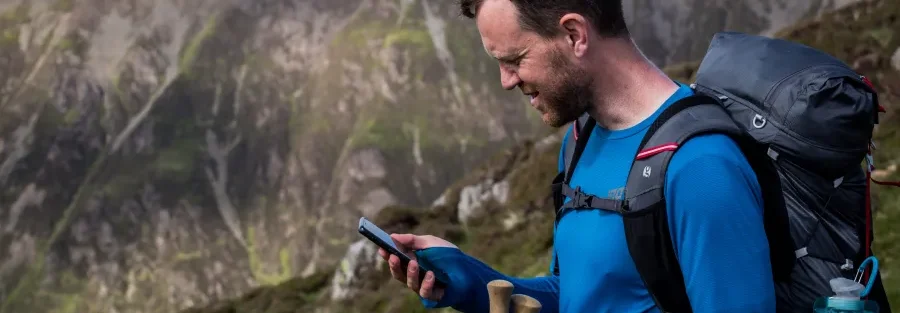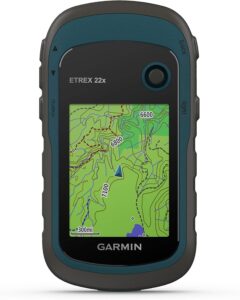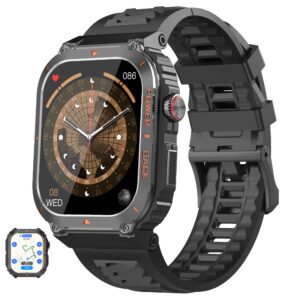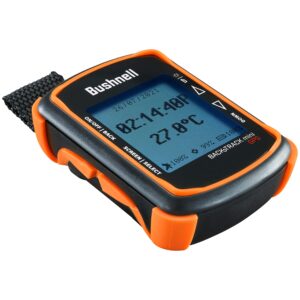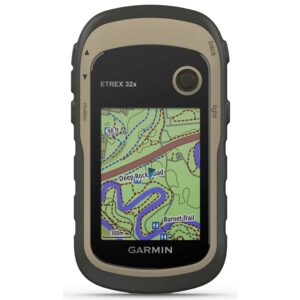Introduction:
Getting lost in the wilderness can turn a fun hiking trip into a real problem. Modern GPS watches and navigation tools help hikers stay on track and call for help when things go sideways.
These devices use satellite signals to show your exact location. They can guide you back to safety even when your phone has zero service.
GPS watches for hiking do more than just track your spot. They provide detailed maps, weather updates, and emergency features that can make a real difference.
Trail navigation tools range from simple handheld GPS units to advanced watches with color displays and preloaded topo maps. Safety beacons take things further by letting you send distress signals to rescue teams from anywhere.
Many hikers now carry a combination of these tools. Staying safe on challenging trails is a top priority for most of us.
When picking navigation gear, battery life usually matters most. You need devices that last for days without charging, especially if you’re out for a while.
Screen visibility in bright sunlight, water resistance, and map detail level matter too. The weight and size of your gear can make a difference on long trips.
We tested fifteen GPS watches, navigation devices, and safety beacons. Our goal was to find the ones that actually keep hikers safe and on course.
Best GPS Watches and Trail Navigation Tools
Here are our top picks for hikers and outdoor adventurers.
All of these offer reliable tracking, long battery life, and essential safety features for your next trail adventure.
Garmin eTrex 22x
This GPS unit is a solid pick for hikers who want reliable navigation and don’t mind learning a few setup steps.
Pros
- Works well in thick forests and spots where phones give up
- Battery lasts all day on two AA batteries
- Screen stays visible even in bright sunlight
Cons
- Takes time to figure out all the buttons
- You’ll need a separate SD card for extra maps
- Setup can get confusing for beginners
The eTrex 22x held up during our backcountry testing. We used it on several day hikes where cell service was nonexistent.
The GPS locked onto satellites quickly and stayed accurate all day. Loading maps took some patience at first, since we had to register online and buy an SD card.
Once we got through the setup, adding new trail maps got much easier. Button navigation felt old-school, but after a few sessions, we got the hang of it.
The physical buttons actually work better with gloves than you’d expect. Battery life was impressive, two AA batteries kept it running for over 20 hours.
We didn’t have to worry about charging in the wilderness. The color screen handled all kinds of lighting, even direct sun.
Reading trail names and elevation data stayed clear throughout the day. It’s not flashy, but it works when you need it most.
Garmin eTrex 10
The eTrex 10 is a good fit for budget-minded hikers who just want basic GPS tracking.
Pros
- Battery life can last up to 20 hours on two AA batteries
- Simple controls make it easy to use right out of the box
- Rugged build handles drops and bad weather
Cons
- Small monochrome screen is tough to read in bright sun
- Limited mapping compared to newer GPS units
- No color display makes navigation less intuitive
We found the eTrex 10 picks up satellite signals quickly, even under thick tree cover. The device connects to both GPS and GLONASS satellites for better accuracy.
The basic interface is easy but can feel too limited at times. We tracked our route and marked waypoints without trouble, but the small black and white screen made it hard to see details on sunny afternoons.
Battery life stood out during extended trips. We used it for three days of hiking without changing batteries.
The waterproof design handled rain and stream crossings with no issues. Plus, it weighs just five ounces, so it barely adds weight to your pack.
Nihemin Military GPS Smart Watch
This watch is a good option for budget-minded hikers who want offline maps and solid GPS tracking. It doesn’t have the polish of premium brands, but it gets the job done.
Pros
- Offline maps work even in remote areas with no cell service
- Battery lasts a full week with normal outdoor use
- GPS locks quickly and stays accurate on mountain trails
Cons
- Watch face scratches easily
- Heart rate readings can get unreliable during hard activities
- Menu system feels clunky compared to bigger brands
We tested this watch on several backcountry trips and found the offline mapping genuinely useful. The GPS connects to multiple satellite systems and usually locks within 15 seconds.
Turn by turn directions worked even in dead zones where our phones had nothing. The altimeter and barometer matched our handheld devices pretty closely.
We used the compass when the trail got confusing. The 2 inch square screen shows map details clearly enough to follow routes.
Battery life impressed us during a week long camping trip. We charged it once and still had juice left after seven days of moderate GPS use.
The IP68 rating held up during rain and stream crossings. Build quality is just okay, the screen scratches more easily than we’d like.
Button responses sometimes lag, especially when scrolling through all the sport modes. Still, for the price, it’s hard to complain too much.
PARDIC CyberX Military GPS Watch
This watch is for hikers who want military-grade durability and comprehensive GPS tracking. The bulky design isn’t for everyone, but it’s tough as nails.
Pros
- Multi-band GPS connects to four satellite systems for accurate positioning
- Military-grade build stands up to harsh conditions and water up to 50 meters
- Long 15-20 day battery life means fewer charging worries
Cons
- Large 1.43-inch display feels bulky on smaller wrists
- Complex interface with 150+ modes can be overwhelming
- Higher price compared to basic GPS watches
We’ve been impressed with the CyberX’s GPS accuracy during backcountry hikes. The multi-band system locks onto satellites quickly, even in dense forest canopy.
Our route tracking stayed precise on long mountain traverses. The military-standard construction really shows during rough use. We’ve banged it against rocks and dunked it in streams with no damage.
The screen stays readable in bright sunlight. The always-on display lets us check our position without pressing any buttons.
The compass, altimeter, and barometer give us reliable data for weather and elevation. Having all these tools in one device saves space and weight.
Battery life exceeded our expectations. We used GPS tracking for 8-10 hours a day and still had power left after a week.
The magnetic charging system makes it easy to top off at base camp. It’s not cheap, but if you want durability and features, it’s worth a look.
Wrapping up, there’s no perfect GPS watch or navigation gadget for every hiker. It depends on your trails, your budget, and how much you want to tinker with tech. But with any of these options, you’ll have a much better shot at staying safe and maybe even enjoying the adventure a little more.
Bushnell BackTrack Mini GPS
This basic GPS unit works for simple navigation needs. It’s not really cut out for serious outdoor adventures because of its limited features.
Pros
- 35-hour battery keeps you going for days
- Big buttons that are easy to press, even with gloves
- Super lightweight at 2 ounces and actually waterproof
Cons
- 2.25-inch screen is tough to read in sunlight
- No detailed maps or advanced route planning
- Bluetooth connection to the phone app drops a lot
We found the BackTrack Mini easy to use right out of the box. The big buttons respond well, even with thick gloves.
Setting waypoints takes just a couple of button presses. The battery life impressed us during a week-long camping trip.
We used it daily and still had power left over. Charging with micro USB is simple, just plug into any battery pack.
The small screen frustrated us on bright days. We had to shade it with our hands to see anything.
The interface is basic, only showing direction and distance to your waypoint. Bluetooth worked inconsistently in our tests.
Sometimes it connected to our phone right away. Other times, we had to restart both devices to get them talking, which made syncing tracks a headache.
Garmin eTrex 32x
This rugged GPS device is a solid pick for hikers who want reliable navigation and long battery life on the trail.
Pros
- Battery lasts up to 25 hours on two AA batteries
- Built-in compass and barometer help with navigation
- Preloaded maps with roads and trails for hiking
Cons
- Small screen makes map details tough to see
- Setup takes a while to get used to
- Bulky design adds weight to your pack
We tested the eTrex 32x on several hiking trips and found it reliable, even in thick forest cover. The GPS signal stayed strong when our phones dropped out.
The color screen shows map details clearly in sunlight. The device feels tough and survived drops on rocky trails without damage.
We liked having real buttons instead of a touchscreen, especially with gloves. The compass feature helped us stay on track during foggy weather.
Battery performance really stood out on longer backpacking trips. We used the same AA batteries for three days of heavy use.
The barometer warned us about weather changes before we could see storm clouds. The small screen size did get annoying when we tried to see trail details.
We had to zoom in a lot to read map info. Learning the menu options took a few practice sessions at home before we felt ready to use it on the trail.
Buying Guide
When we shop for GPS watches and navigation tools, we’ve got to think about our own needs. Different activities call for different features, obviously.
Battery Life
Battery life matters for long hikes. Look for something that lasts at least 20 hours in GPS mode.
Some watches can go up to 100 hours if you use battery-saving settings. That’s pretty wild, right?
GPS Accuracy
We want precise location tracking. Devices that use multiple satellite systems give us better accuracy, especially in tough terrain.
Screen Quality
A clear screen helps us read maps in bright sunlight. Bigger screens show more detail, but they’ll drain your battery faster.
Water Resistance
Our gear needs to handle rain and water crossings. Look for at least IPX7 rating, this protects against heavy rain and short dunks in water.
Key Features to Consider
| Feature | Why It Matters |
|---|---|
| Preloaded Maps | No need to download maps before trips |
| Emergency Features | SOS buttons can save lives |
| Smartphone Connection | Sync data and get weather updates |
| Memory Storage | Store more routes and waypoints |
Safety Features
Emergency beacons should have global coverage. Devices that work with rescue services and offer two-way messaging let us communicate our situation if something goes wrong.
Durability
We want gear that survives drops and bumps. Military-grade ratings show the device can handle rough use, which is honestly a must for real adventures.
Price Range
Basic GPS watches usually start at about $100. If you want advanced models with maps, expect to pay between $300 and $600.
Safety beacons tend to cost anywhere from $150 to $400, depending on the features you’re after.
It’s a bit of a spread, honestly, so there’s something for every budget. Just think about what you actually need before dropping a ton of cash.
Alright, that’s a wrap on our look at some of the best GPS units for hiking and what to keep in mind before buying. Whether you’re heading out for a day hike or a week in the wild, picking the right gear just makes everything smoother.
Support the Adventure
To make your walls less boring, check out my photography portfolio and bring a piece of the wild and my story into your home.
If you’d like to fuel future adventures, you can donate a coffee on Ko-Fi. Every cup keeps me chasing sunrises and stories.
When you shop using my affiliate links, every click helps support this blog at no extra cost to you. It’s a small way to keep Unicorn Adventure alive and kicking while I keep exploring.
Subscribe to my mailing list for future updates, new stories, and behind-the-scenes adventures.
Stay connected with me on Instagram and Facebook for more photos and daily inspiration.
Thanks for being part of the journey, Unicorn Squadron!


